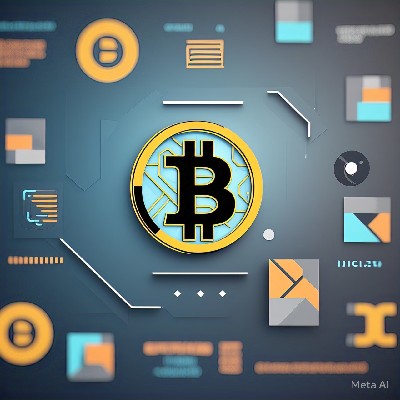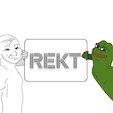Bitget:日次取引量の世界ランキングでトップ4にランクイン!
BTCマーケットシェア63.85%
Bitgetの新規上場 : Pi Network
BTC/USDT$94945.04 (+0.10%)恐怖・強欲指数52(ニュートラル)
アルトコインシーズン指数:0(ビットコインシーズン)
ビットコイン現物ETFの純流入総額(+$674.9M(1日)、+$2.63B(7日))。6,200 USDT相当の新規ユーザー向けウェルカムギフトパッケージ。今すぐ獲得する
Bitgetアプリでいつでもどこでも取引しましょう今すぐダウンロードする
Bitget:日次取引量の世界ランキングでトップ4にランクイン!
BTCマーケットシェア63.85%
Bitgetの新規上場 : Pi Network
BTC/USDT$94945.04 (+0.10%)恐怖・強欲指数52(ニュートラル)
アルトコインシーズン指数:0(ビットコインシーズン)
ビットコイン現物ETFの純流入総額(+$674.9M(1日)、+$2.63B(7日))。6,200 USDT相当の新規ユーザー向けウェルカムギフトパッケージ。今すぐ獲得する
Bitgetアプリでいつでもどこでも取引しましょう今すぐダウンロードする
Bitget:日次取引量の世界ランキングでトップ4にランクイン!
BTCマーケットシェア63.85%
Bitgetの新規上場 : Pi Network
BTC/USDT$94945.04 (+0.10%)恐怖・強欲指数52(ニュートラル)
アルトコインシーズン指数:0(ビットコインシーズン)
ビットコイン現物ETFの純流入総額(+$674.9M(1日)、+$2.63B(7日))。6,200 USDT相当の新規ユーザー向けウェルカムギフトパッケージ。今すぐ獲得する
Bitgetアプリでいつでもどこでも取引しましょう今すぐダウンロードする



Lorenzo Protocolの価格BANK
新規上場
決済通貨:
JPY
¥6.24+8.58%1D
BANKからJPYへの交換
BANK
JPY
1 BANK = 0.00 JPY
Bitgetは、主要取引プラットフォームの中で最も低い取引手数料を提供しています。VIPレベルが高ければ高いほど、より有利なレートが適用されます。
価格チャート
TradingView
時価総額
Lorenzo Protocolの価格チャート(BANK/JPY)
最終更新:2025-05-05 22:36:29(UTC+0)
時価総額:¥2,654,255,523.38
完全希薄化の時価総額:¥2,654,255,523.38
24時間取引量:¥1,404,517,436.58
24時間取引量 / 時価総額:52.91%
24時間高値:¥6.29
24時間安値:¥5.73
過去最高値:¥8.09
過去最安値:¥2.64
循環供給量:425,250,000 BANK
総供給量:
425,250,000BANK
流通率:99.00%
最大供給量:
2,100,000,000BANK
BTCでの価格:0.{6}4578 BTC
ETHでの価格:0.{4}2386 ETH
BTC時価総額での価格:
¥636,695.8
ETH時価総額での価格:
¥74,268.03
コントラクト:
0x3AeE...6EbF2bF(BNB Smart Chain (BEP20))
もっと
Lorenzo Protocolに投票しましょう!
注:この情報はあくまでも参考情報です。
Lorenzo ProtocolのAI分析レポート
本日の暗号資産市場のハイライトレポートを見る
本日のLorenzo Protocolの現在価格(JPY)
現在、Lorenzo Protocolの価格は¥6.24 JPYで時価総額は¥2.65Bです。Lorenzo Protocolの価格は過去24時間で8.58%上昇し、24時間の取引量は¥1.40Bです。BANK/JPY(Lorenzo ProtocolからJPY)の交換レートはリアルタイムで更新されます。
Lorenzo Protocolの価格履歴(JPY)
Lorenzo Protocolの価格は、この1年で+8.77%を記録しました。直近1年間のJPY建てBANKの最高値は¥8.09で、直近1年間のJPY建てBANKの最安値は¥2.64でした。
時間価格変動率(%) 最低価格
最低価格 最高価格
最高価格 
 最低価格
最低価格 最高価格
最高価格 
24h+8.58%¥5.73¥6.29
7d+21.03%¥4.89¥6.29
30d+3.90%¥2.64¥8.09
90d+8.77%¥2.64¥8.09
1y+8.77%¥2.64¥8.09
すべての期間+812.14%¥2.64(2025-04-18, 18 日前 )¥8.09(2025-04-18, 18 日前 )
Lorenzo Protocolの最高価格はいくらですか?
Lorenzo Protocolの過去最高値(ATH)は¥8.09 JPYで、2025-04-18に記録されました。Lorenzo ProtocolのATHと比較すると、Lorenzo Protocolの現在価格は22.82%下落しています。
Lorenzo Protocolの最安価格はいくらですか?
Lorenzo Protocolの過去最安値(ATL)は¥2.64 JPYで、2025-04-18に記録されました。Lorenzo ProtocolのATLと比較すると、Lorenzo Protocolの現在価格は136.16%上昇しています。
Lorenzo Protocolの価格予測
2026年のBANKの価格はどうなる?
BANKの過去の価格パフォーマンス予測モデルによると、BANKの価格は2026年に¥6.42に達すると予測されます。
2031年のBANKの価格はどうなる?
2031年には、BANKの価格は+3.00%変動する見込みです。 2031年末には、BANKの価格は¥14.65に達し、累積ROIは+151.92%になると予測されます。
よくあるご質問
ロレンツォプロトコルの価格に最も影響を与える要因は何ですか?
ロレンツォプロトコルの価格は、市場の需要、全体的な暗号通貨市場の動向、技術的な進展、プロジェクトに関連するニュースや発表、より広範な経済環境など、さまざまな要因によって影響を受ける可能性があります。
ロレンゾプロトコルは良い投資ですか?
投資の決定は、自分自身のリサーチとリスク許容度に基づくべきです。自分がその基本的な価値、採用の可能性、そしてチームがそのロードマップを実行する能力を信じるなら、ロレンゾプロトコルは良い投資と見なされるかもしれません。
ロレンツォプロトコルの歴史的な価格傾向は何ですか?
ロレンツォプロトコルの歴史的な価格傾向は、時間の経過とともにそのパフォーマンスを示しますが、変動する可能性があります。過去のパフォーマンスが将来の結果を保証しないことを理解した上で、過去の価格動向を分析することが重要です。
ロレンツォプロトコルはどのように購入できますか?
ビットゲット取引所などの暗号通貨取引所でロレンツォプロトコルを購入できます。アカウントを作成し、本人確認を行い、資金を入金し、ロレンツォプロトコルのペアを検索してトレードを開始してください。
ロレンツォプロトコルの現在の価格はいくらですか?
ロレンツォプロトコルの現在の価格は、金融ニュースのウェブサイトや、ビットゲット取引所のような暗号通貨取引所で直接見つけることができます。
ロレンソプロトコルの価格は将来的に上昇するでしょうか?
将来の価格変動を予測することは本質的に不確実であり、かなりのリスクを伴います。価格は、市場のセンチメント、技術の進展、マクロ経済的条件など、さまざまな要因によって影響を受けます。
ロレンツォプロトコルの市場資本は何ですか?
ロレンツォプロトコルの市場資本は、現在の価格に流通している総供給量を掛けることで計算できます。この情報は、ビットゲット取引所のような暗号通貨データプラットフォームや取引所でしばしば利用可能です。
ロレンツォプロトコルに投資する際のリスクは何ですか?
リスクには、高いボラティリティ、規制の変更、技術的課題、他の暗号通貨との競争が含まれます。投資する前に、自分自身でリサーチを行い、自分のリスク許容度を考慮することが重要です。
ロレンツォプロトコルに関する最新ニュースはどこで見つけられますか?
ロレンツォプロトコルに関する最新ニュースは、暗号通貨ニュースサイト、ソーシャルメディアプラットフォーム、公式プロジェクトの発表、そしてBitget Exchangeのような取引所の更新を通じて見つけることができます。
ロレンツォプロトコルは他の暗号通貨とどのように比較されますか?
ロレンツォプロトコルは、技術、市場資本化、採用率、コミュニティサポートに基づいて他の暗号通貨と比較できます。これらの特徴を比較することで、競合他社に対する強みと弱みを知ることができます。
Lorenzo Protocolの現在の価格はいくらですか?
Lorenzo Protocolのライブ価格は¥6.24(BANK/JPY)で、現在の時価総額は¥2,654,255,523.38 JPYです。Lorenzo Protocolの価値は、暗号資産市場の24時間365日休みない動きにより、頻繁に変動します。Lorenzo Protocolのリアルタイムでの現在価格とその履歴データは、Bitgetで閲覧可能です。
Lorenzo Protocolの24時間取引量は?
過去24時間で、Lorenzo Protocolの取引量は¥1.40Bです。
Lorenzo Protocolの過去最高値はいくらですか?
Lorenzo Protocol の過去最高値は¥8.09です。この過去最高値は、Lorenzo Protocolがローンチされて以来の最高値です。
BitgetでLorenzo Protocolを購入できますか?
はい、Lorenzo Protocolは現在、Bitgetの取引所で利用できます。より詳細な手順については、お役立ちlorenzo-protocolの購入方法 ガイドをご覧ください。
Lorenzo Protocolに投資して安定した収入を得ることはできますか?
もちろん、Bitgetは戦略的取引プラットフォームを提供し、インテリジェントな取引Botで取引を自動化し、利益を得ることができます。
Lorenzo Protocolを最も安く購入できるのはどこですか?
戦略的取引プラットフォームがBitget取引所でご利用いただけるようになりました。Bitgetは、トレーダーが確実に利益を得られるよう、業界トップクラスの取引手数料と流動性を提供しています。
Lorenzo Protocolに関するニュース
もっと見る
Lorenzo Protocolの最新情報
Lorenzo Protocol市場
Lorenzo Protocolの集中度別保有量
大口
投資家
リテール
Lorenzo Protocolの保有時間別アドレス
長期保有者
クルーザー
トレーダー
coinInfo.name(12)のリアル価格チャート

Lorenzo Protocolのグローバル価格
現在、Lorenzo Protocolは他の通貨の価値でいくらですか?最終更新:2025-05-05 22:36:29(UTC+0)
BANK から MXN
Mexican Peso
Mex$0.86BANK から GTQGuatemalan Quetzal
Q0.33BANK から CLPChilean Peso
CLP$40.81BANK から UGXUgandan Shilling
Sh159.32BANK から HNLHonduran Lempira
L1.13BANK から ZARSouth African Rand
R0.79BANK から TNDTunisian Dinar
د.ت0.13BANK から IQDIraqi Dinar
ع.د57.05BANK から TWDNew Taiwan Dollar
NT$1.27BANK から RSDSerbian Dinar
дин.4.49BANK から DOPDominican Peso
RD$2.56BANK から MYRMalaysian Ringgit
RM0.18BANK から GELGeorgian Lari
₾0.12BANK から UYUUruguayan Peso
$1.83BANK から MADMoroccan Dirham
د.م.0.4BANK から OMROmani Rial
ر.ع.0.02BANK から AZNAzerbaijani Manat
₼0.07BANK から SEKSwedish Krona
kr0.42BANK から KESKenyan Shilling
Sh5.61BANK から UAHUkrainian Hryvnia
₴1.81- 1
- 2
- 3
- 4
- 5
Lorenzo Protocol(BANK)の購入方法

無料でBitgetアカウントを作成します
Eメールアドレス/携帯電話番号でBitgetに登録し、アカウントを保護するために強力なパスワードを作成します。

アカウントを認証する
個人情報を入力し、有効な写真付き身分証明書をアップロードして本人確認(KYC認証)を行います。

Lorenzo ProtocolをBANKに交換
Bitgetで取引する暗号資産を選択します。
詳細はこちらBANK無期限先物を取引する
Bitgetに登録し、USDTまたはBANKトークンを購入した後、BANK先物やマージン取引を含むデリバティブ取引を開始することができ、収入を増やすことができます。
BANKの現在価格は¥6.24で、24時間の価格変動は+8.58%です。トレーダーはBANK先物をロングまたはショートすることで利益を獲得できます。
エリートトレーダーをフォローして、BANKのコピートレードを始めましょう。
Bitgetに登録し、USDTまたはBANKトークンを購入した後、エリートトレーダーをフォローしてコピートレードを開始することもできます。
もっと購入する
Lorenzo Protocol(BANK)はどこで買えますか?
動画セクション - 素早く認証を終えて、素早く取引へ

Bitgetで本人確認(KYC認証)を完了し、詐欺から身を守る方法
1. Bitgetアカウントにログインします。
2. Bitgetにまだアカウントをお持ちでない方は、アカウント作成方法のチュートリアルをご覧ください。
3. プロフィールアイコンにカーソルを合わせ、「未認証」をクリックし、「認証する」をクリックしてください。
4. 発行国または地域と身分証の種類を選択し、指示に従ってください。
5. 「モバイル認証」または「PC」をご希望に応じて選択してください。
6. 個人情報を入力し、身分証明書のコピーを提出し、自撮りで撮影してください。
7. 申請書を提出すれば、本人確認(KYC認証)は完了です。
Bitgetを介してオンラインでLorenzo Protocolを購入することを含む暗号資産投資は、市場リスクを伴います。Bitgetでは、簡単で便利な購入方法を提供しており、取引所で提供している各暗号資産について、ユーザーに十分な情報を提供するよう努力しています。ただし、Lorenzo Protocolの購入によって生じる結果については、当社は責任を負いかねます。このページおよび含まれる情報は、特定の暗号資産を推奨するものではありません。
BANKからJPYへの交換
BANK
JPY
1 BANK = 6.24 JPY
Bitgetは、主要取引プラットフォームの中で最も低い取引手数料を提供しています。VIPレベルが高ければ高いほど、より有利なレートが適用されます。
Lorenzo Protocolの評価
コミュニティからの平均評価
4.6
このコンテンツは情報提供のみを目的としたものです。
Bitgetインサイト

Web3-Xcellency
3時
What is Blockchain?
Blockchain is a modern computer science technology that uses a system of calculations known as "Algorithms". What is an Algorithm? It's a set of well-organized steps followed from beginning to end to solve a problem or carry out a task.
Blockchain works by collecting and distributing data across multiple "Nodes". A Node refers to a computer or device capable of storing data directly (in a decentralized manner), without the need for any central person or authority (Middlemen or Central Authority) to give commands or make decisions. This is what is called an "Open Distributed Ledger".
Every transaction or activity carried out on the blockchain happens across all the computers connected to the system worldwide. There isn’t a single location (database) where the data is stored—instead, everything done on the blockchain uses cryptography (the science of encrypting and securing information).
Blockchain is a system that distributes data across computers openly, and this is what is called the "Distributed Ledger System or Technology" (DLT), also known as "Open Distributed Ledger".
In most cases, you don’t need permission, approval, or authorization from anyone before you start using the blockchain. You just have to meet the computer’s technical requirements, and once you do, you can use it from anywhere in the world. This is what is meant by "Permissionless", which many governments do not like.
Blockchain is a data-sharing technology that operates directly over the internet and computers (a decentralized system or open distributed ledger). Decentralized here means no person or authority has control over the entire system. It’s an open system.
In Blockchain, data is stored on countless computers globally—only God knows how many. If someone tries to destroy the data on the blockchain, they would need to attack all these computers from all over the world, which is practically impossible.
Blockchain offers transparency, meaning fairness—whatever happens on one computer is exactly what happens on the others. Whatever you see, others see the same; there is no secrecy. Even the creators of a blockchain cannot hide anything. This is unlike a bank database, where you can only see what they allow you to see, and only they have access to the data. If hackers breach it, there’s nothing you can do except pray for protection.
Blockchain is used in many fields: healthcare, security, politics (credible elections), commerce, creating receipts, and preserving important information permanently—like storing the Qur’an and other valuable texts that people fear might be corrupted or lost in the future.
Discussions about decentralized blockchain technology began in the early 1990s and continued until around 1997. But in 2009, the world’s first blockchain was created—the Bitcoin Blockchain, developed by an anonymous person called Satoshi Nakamoto. Why did he hide his identity?
Because blockchain technology is so powerful and full of deep insights, if governments had known who he was, they might have tried to eliminate him. Before doing that, they would have demanded he destroy what he created—but even he couldn’t do that.
Now, even though no one knows what Satoshi Nakamoto looks like, governments are at war with cryptocurrency, while claiming not to oppose blockchain itself. They say this because blockchain carries many benefits—but in reality, they cannot stop it.
Some believe Satoshi Nakamoto is not one person, but a group of engineers hiding behind the name. They believe these are Japanese developers who created Bitcoin.
Countries that think Bitcoin could weaken their national currencies or expose their financial secrets are the ones opposing Bitcoin. But in truth, they often oppose both Bitcoin and blockchain together.
BITCOIN-0.95%
DEEP+0.31%

Bpay-News
3時
Bloomberg: Stablecoin legislation split, Democrats threaten to use unlimited debate to obstruct legislation
A bipartisan bill in the U.S. Senate aimed at establishing a federal framework for stablecoins has shown major differences during the discussion, with some Democratic lawmakers threatening to use filibuster on the bill, demanding additional strengthening of consumer protection and anti-money laundering clauses. A Democratic senator pointed out that the new agreement is still "full of loopholes" in stipulating stablecoin issuance and bank reserve requirements, and if it is not amended, it will not be able to protect the rights of ordinary users. The disagreement has forced the postponement of the vote originally scheduled for this week, and the legislative prospects are becoming increasingly confusing. Market participants are worried that if it fails to pass the current Congress, the regulatory vacuum in the U.S. stablecoin ecosystem may continue, affecting the speed of industry development. (Bloomberg)
MAJOR-0.19%
S-1.34%

Bpay-News
4時
Goldman Sachs: The Fed is unlikely to cut interest rates because of weak "soft data"
U.S. consumer and business surveys show an anxious economic mood, but underlying data do not yet point to a severe slowdown. Goldman Sachs economists wrote that the Fed is unlikely to ease policy based on "soft data" alone, especially because soft data has wrongly signaled a recession in the recent past, such as during the Fed's fight against inflation in 2022. The Fed "also wants to see evidence from the labor market and other hard data before cutting rates," the Goldman team wrote. The investment bank, like the rest of Wall Street, believes the Fed will keep interest rates unchanged in its rate decision on Wednesday. (Jinshi)
S-1.34%
BANK+8.07%

Asadsiyal56
6時
100 Days Into Trump’s Presidency: What’s Next for the Market?
As the curtain fell on the first 100 days of Donald Trump’s presidency, Wall Street found itself navigating not just tweets and tariffs, but a reshaping of the market psyche. Investors had spent months pricing in “Trumponomics” – the promise of deregulation, tax cuts, and infrastructure spending. But now, with the early fanfare settling into policy trench warfare, the question arises: what’s next for the market?
From Euphoria to Evaluation
Trump’s election ignited a post-election rally, dubbed the “Trump Bump.” Investors rotated into sectors like financials, industrials, and small-caps, betting on growth and reflation. The S&P 500 soared over 5% in the first 100 days, a striking contrast to typical post-inauguration uncertainty. But underneath the rally lay a question mark: could policy execution keep up with market expectations?
With the initial legislative hurdles – like the failure to repeal the Affordable Care Act – investors began shifting from hope to realism. The market started scrutinizing not just the promises, but the pathway.
Policy-Driven Sectors on Watch
1. Financials: Deregulation talk boosted bank stocks early on. Repealing Dodd-Frank and easing capital requirements remain on the table, but implementation will be gradual. Markets may respond more to Fed actions than to policy at this point.
2. Infrastructure & Industrials: A trillion-dollar infrastructure plan was floated, but legislative clarity remains elusive. Until the funding model is defined, market enthusiasm may be capped.
3. Tech & Trade Tensions: Rising protectionist rhetoric, especially toward China, keeps tech on edge. While Trump’s nationalist stance appeals to some sectors, global supply chains are wary.
Geopolitics and the Trump Effect
Beyond economics, Trump’s foreign policy style – assertive and sometimes unpredictable – has added new risk premiums. North Korea, Syria, and NATO tensions added to volatility in Q1. Market reaction will hinge on whether this posture leads to negotiated strength or sustained uncertainty.
Volatility: The Slumbering Giant
Ironically, despite the noise, volatility has remained low. The VIX (often called the "fear gauge") suggests a market betting on stability. But history reminds us that complacency can be a prelude to correction.
The Road Ahead: Markets Want Delivery
For markets, the Trump presidency has become less about personality and more about delivery. Investors now want to see:
Tax Reform: Real, concrete progress.
Healthcare Clarity: Not just repeal, but replacement details.
Fiscal Stimulus: Infrastructure spending with teeth.
Regulatory Consistency: A shift from executive orders to legislated policy.
Conclusion: From Rhetoric to Reality
100 days in, Trump’s presidency has been a test of market patience and perception. The next 100 days may be less about tweets and more about traction. For investors, the message is clear: the era of pricing in promises is over. It's time to see what Washington can actually deliver.
BANK+8.07%
UP-3.91%
BGUSER-QNS3MTHA
7時
What is Blockchain?
Blockchain is a cutting-edge technology in the field of computer science that uses a computational system called an "algorithm." An "algorithm" is a structured sequence of steps followed from the beginning to the end to solve a problem or carry out a task.
Blockchain collects and distributes data across "nodes." A node refers to a computer or any device capable of storing data directly (decentralized) without any individual or group acting as an intermediary (middlemen or central authority) to issue commands or make decisions. This is known as an "open distributed ledger."
All executed transactions are compiled across all computers connected to the system worldwide. There is no single storage location (database) where the data is kept. All activities on the blockchain rely on cryptography.
Blockchain is a system that distributes data transparently across computers, which is why it is called a "Distributed Ledger System or Technology" (DLT) or "Open Distributed Ledger" in short.
In most cases, blockchain does not require permission, authorization, approval, or anyone’s consent before you can use it. You only need to meet the computer’s requirements, and once you do, you can use it from anywhere in the world. This is called "permissionless," which is something governments dislike and oppose.
Blockchain is a technology based on the concept of decentralized data distribution (a decentralized system or open distributed ledger) over the internet and computers. "Decentralized" here means direct—no institution or individuals have control over what happens on the blockchain because it is a decentralized system, an open distributed ledger.
~ In blockchain, data is stored on computers, and only God knows exactly how many there are. If someone wants to destroy the data on the blockchain, they would have to locate and destroy all these computers worldwide, which is impossible.
Blockchain operates with "transparency," meaning fairness and openness. What is on one computer is the same as what is on another. What you see is exactly what others see—there is no concealment. Even the creators of the blockchain cannot hide anything within it.
Unlike your bank’s database storage, where only what is shown to you is visible, and no one else has a copy of the data except the bank itself. If hackers breach it, only God can save the situation.
Blockchain is used in healthcare, solving trust issues, ensuring credible political elections, commerce, generating receipts 🧾, and storing data permanently without fear of deletion—such as preserving the Qur'an and important books that people fear may be lost or corrupted in the future.
Discussions about decentralized blockchain technology began in the early 1990s until around 1997. Then, in 2009, the first blockchain in the world was created—the Bitcoin blockchain. It was developed by an anonymous person known as "Satoshi Nakamoto." Why did he hide his identity?
Because blockchain technology is extremely powerful and contains profound wisdom, if governments knew his identity, they would eliminate him before he could destroy the system—which he himself cannot do.
Even now, without knowing Satoshi Nakamoto’s true identity, governments are fighting against cryptocurrency while claiming they are not against blockchain, because blockchain holds immense benefits. However, they say this because they have failed to stop blockchain technology.
Some believe that the name Satoshi Nakamoto is a pseudonym used by a group of engineers who created Bitcoin, not just one individual. However, it is widely agreed that the name Satoshi Nakamoto is of Japanese origin.
Countries that see Bitcoin as a threat to their currency’s value and a risk of exposing their secrets tend to oppose Bitcoin, but generally, they dislike both Bitcoin and blockchain as a whole.
BITCOIN-0.95%
ANYONE+0.51%
関連資産
同等の時価総額
すべてのBitget資産の中で、時価総額がLorenzo Protocolに最も近いのはこれらの8資産です。
Lorenzo Protocolの追加情報
取引
Bitget Earn
BANKは Bitget取引所に取引できませんが、 Bitget Walletに預けることができます。 また、Bitget取引所はCEXのプラットフォームとして初めてBANK取引をサポートしています。
BANKをBitgetで取引できます。BANK/USDT
現物BANK/USDT
USDT-M



















.png)






![QuickSwap [Old]](https://img.bgstatic.com/multiLang/coinPriceLogo/de508981b3947eca66fead9a590930311710263088098.png)




